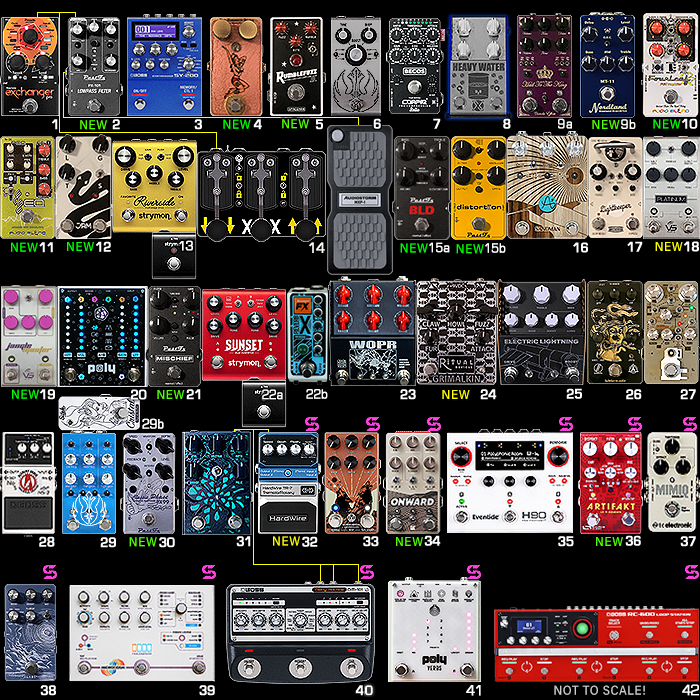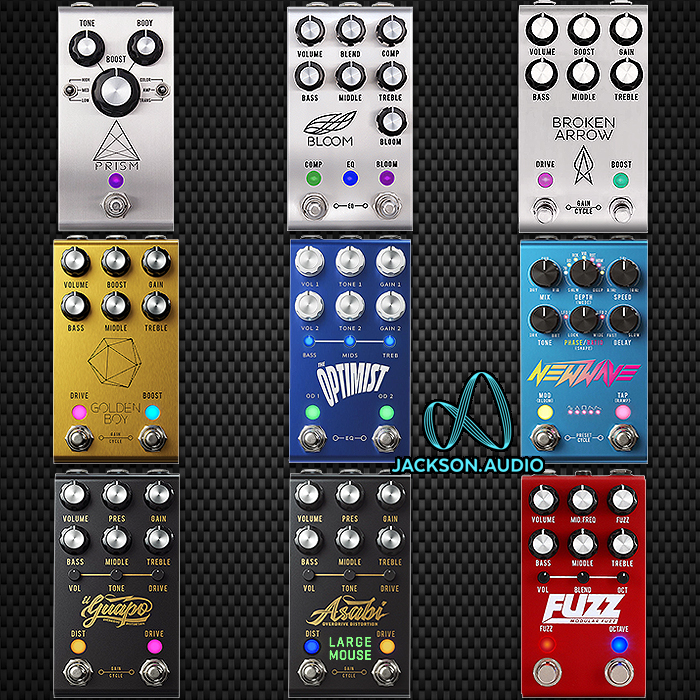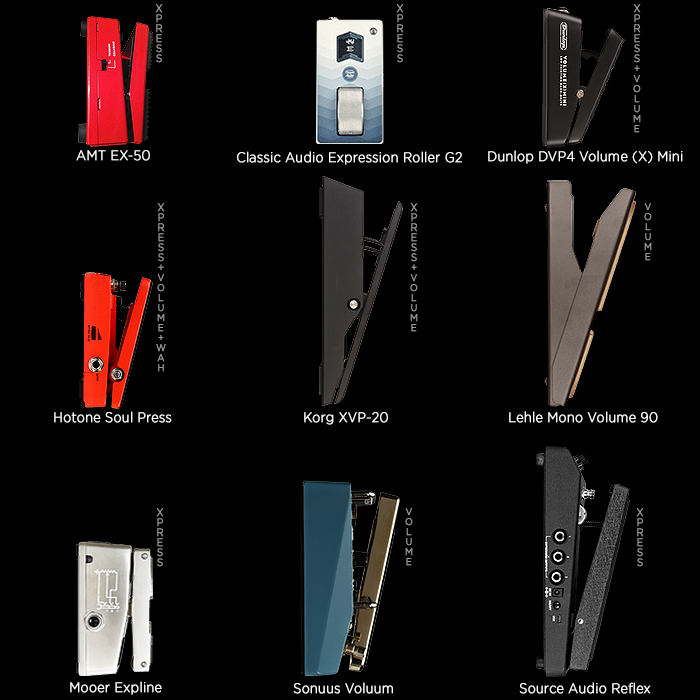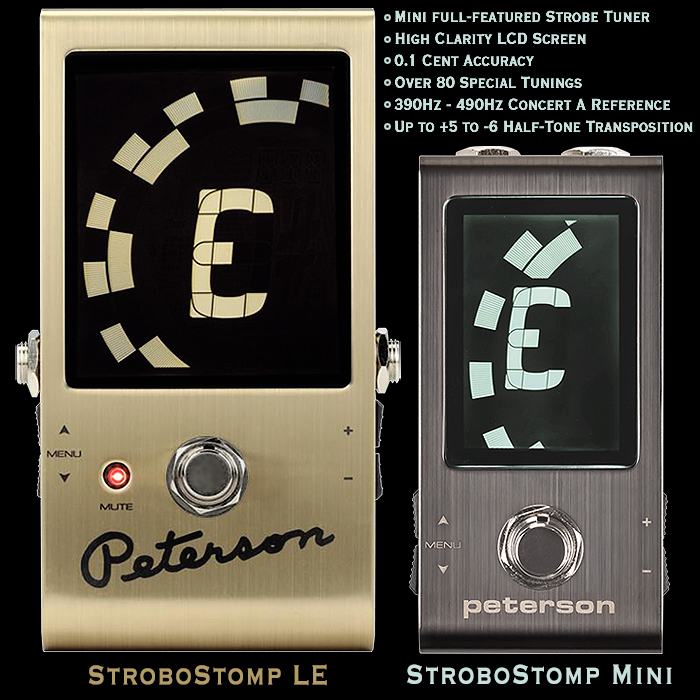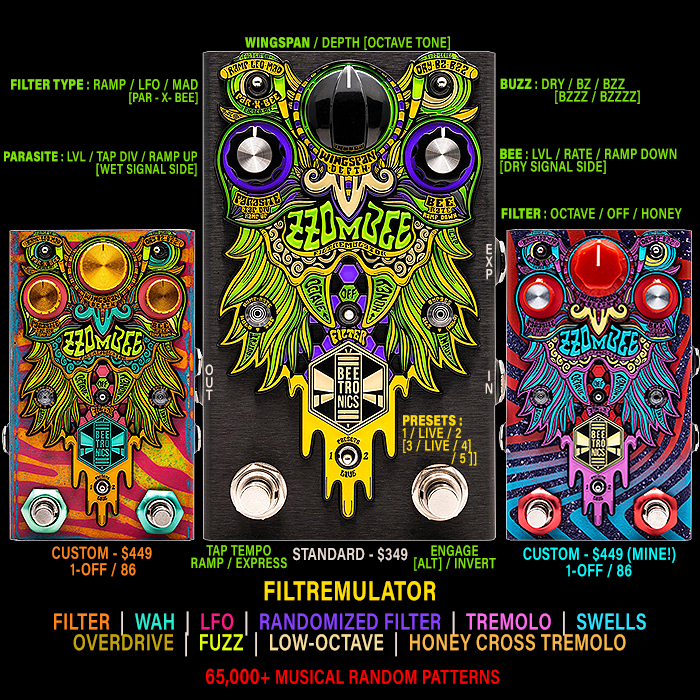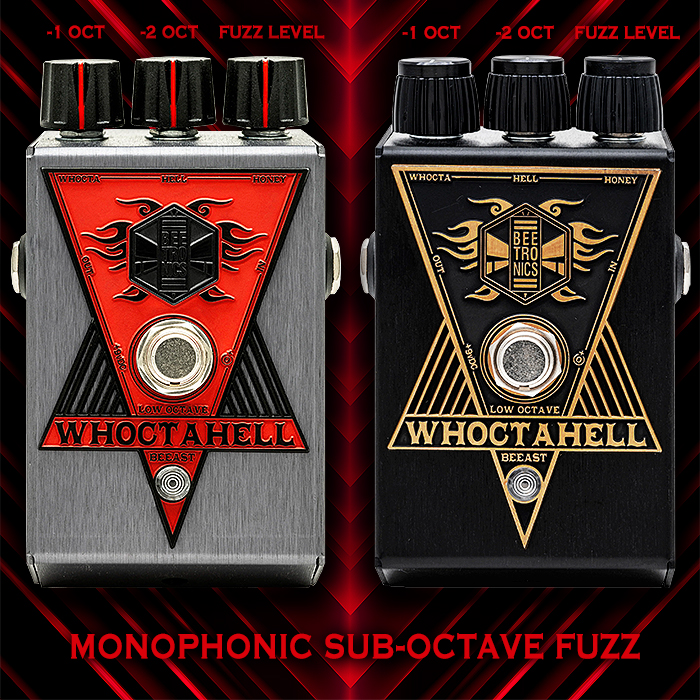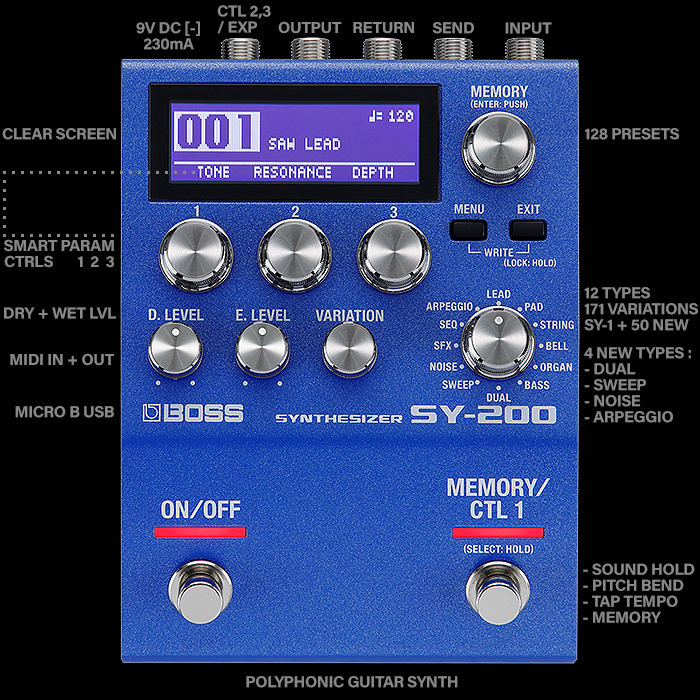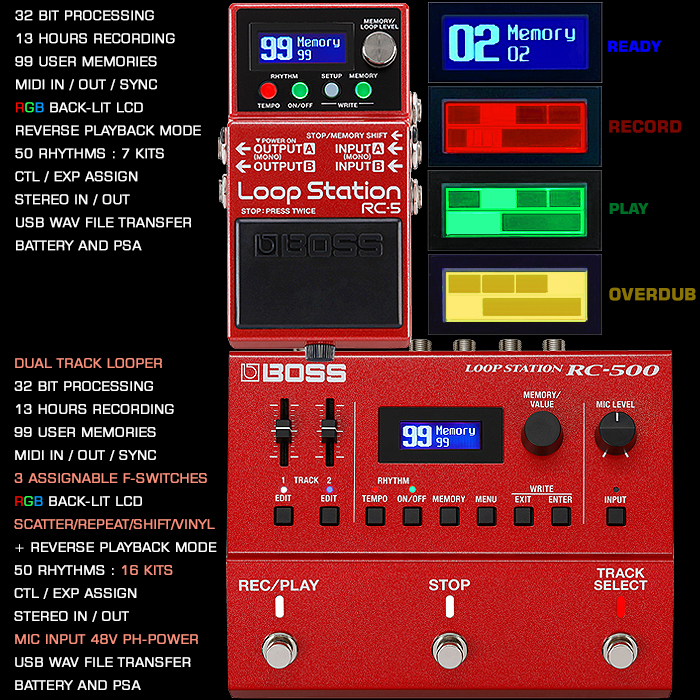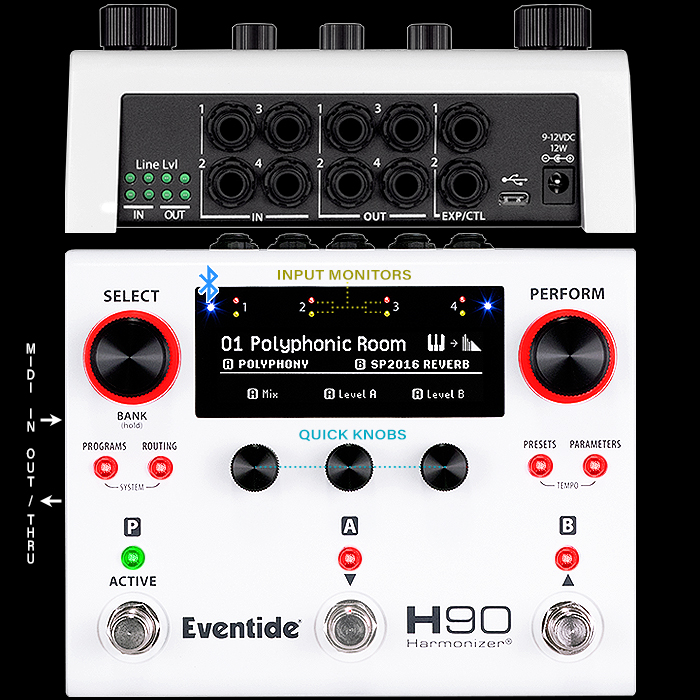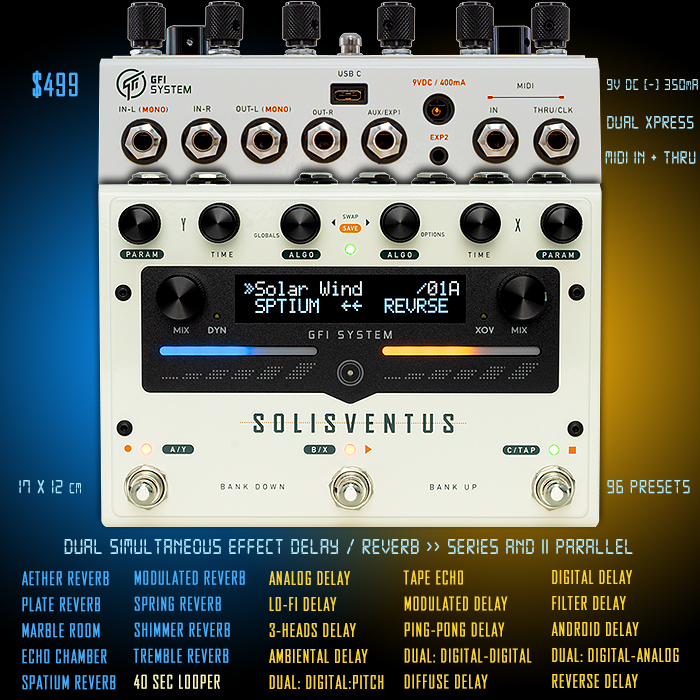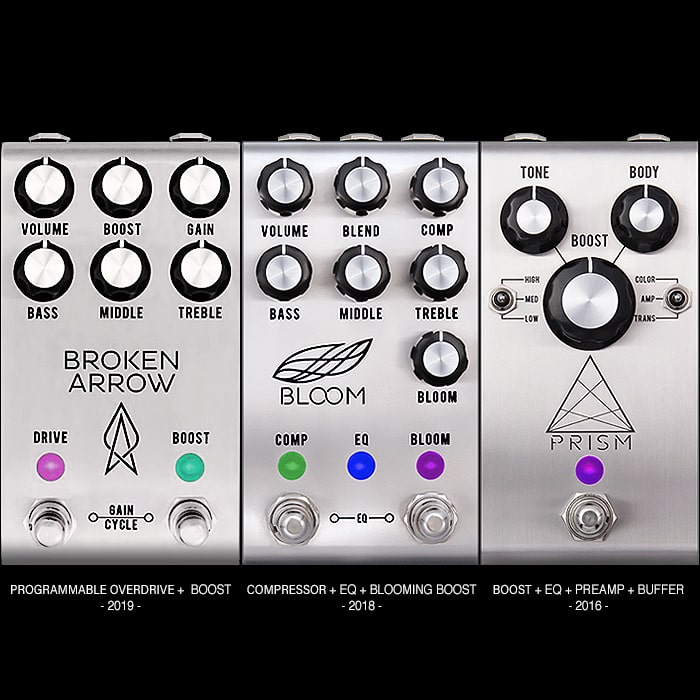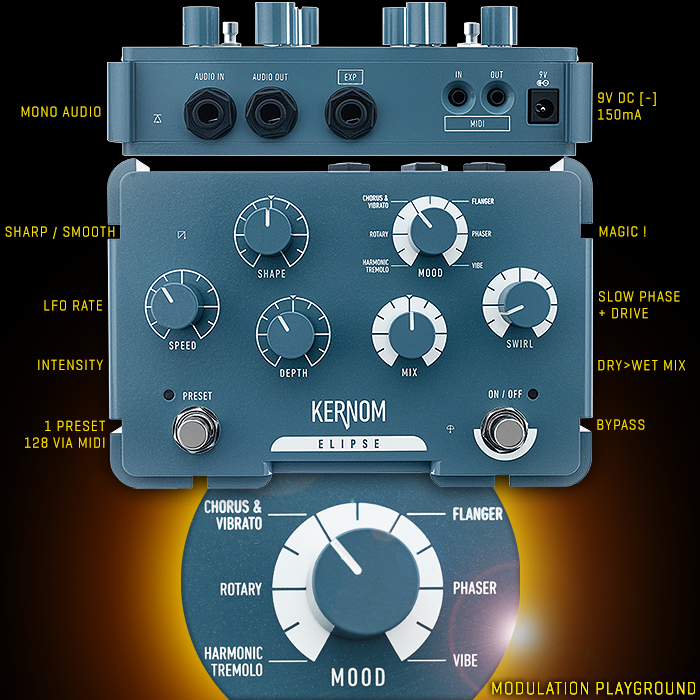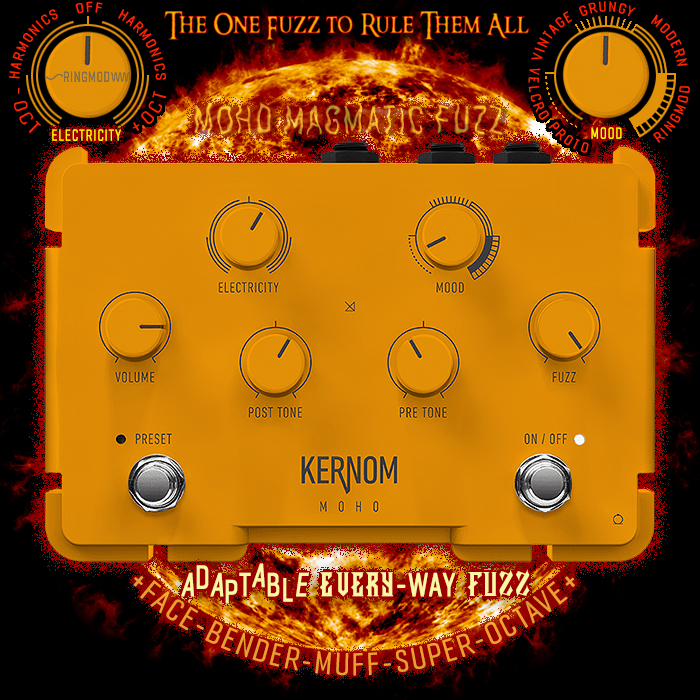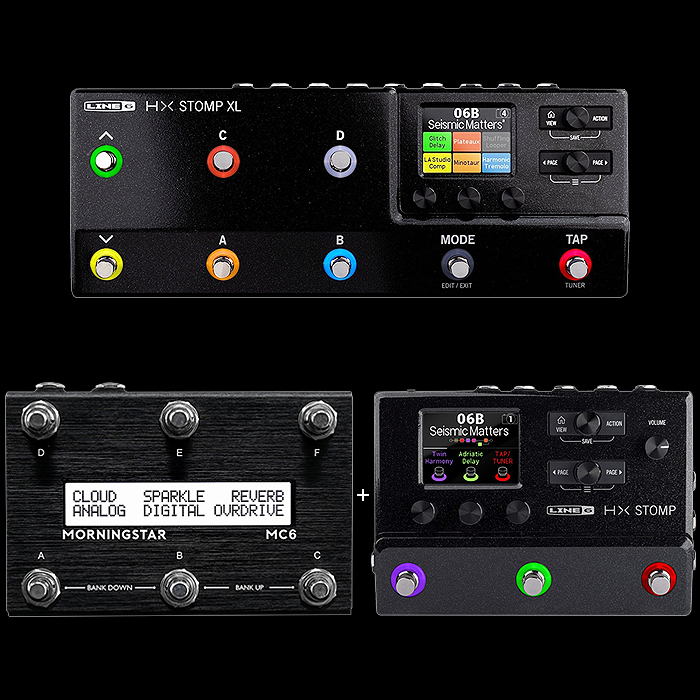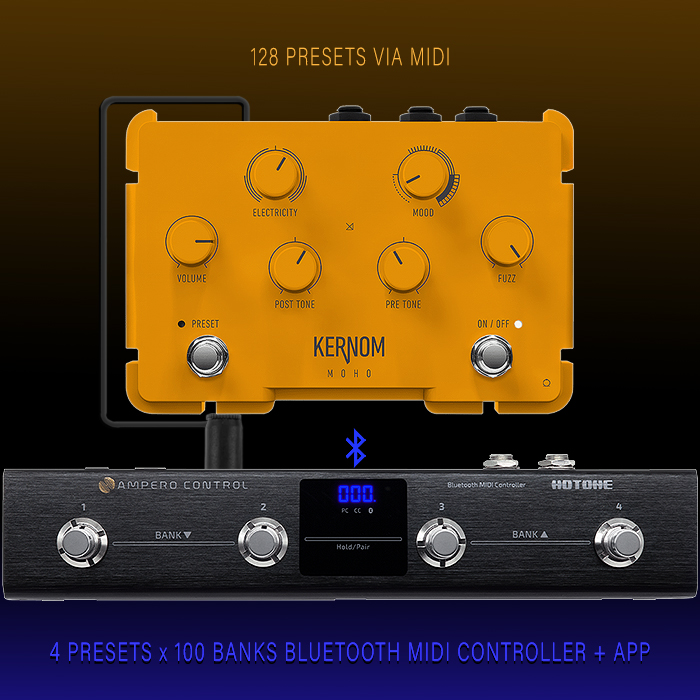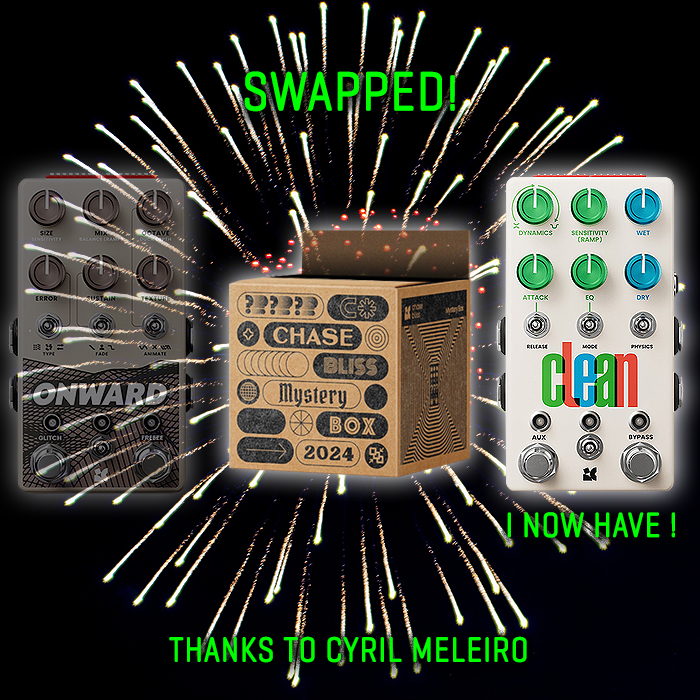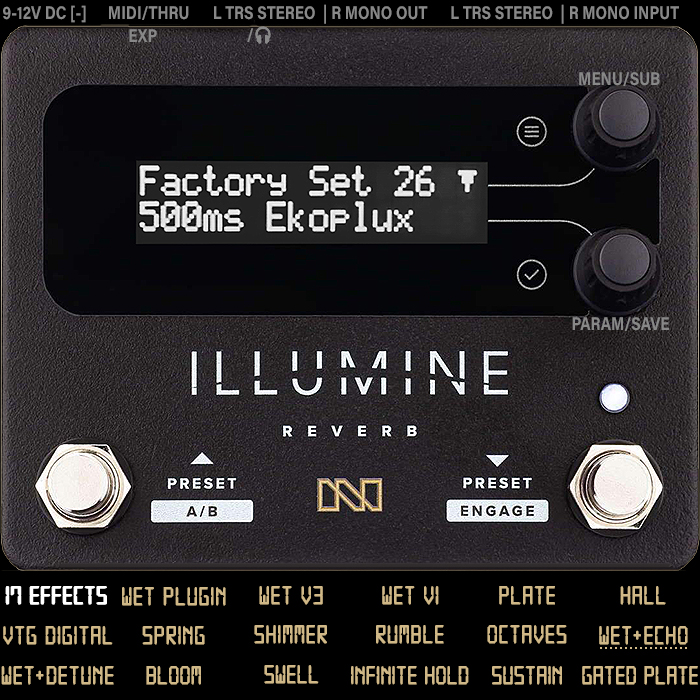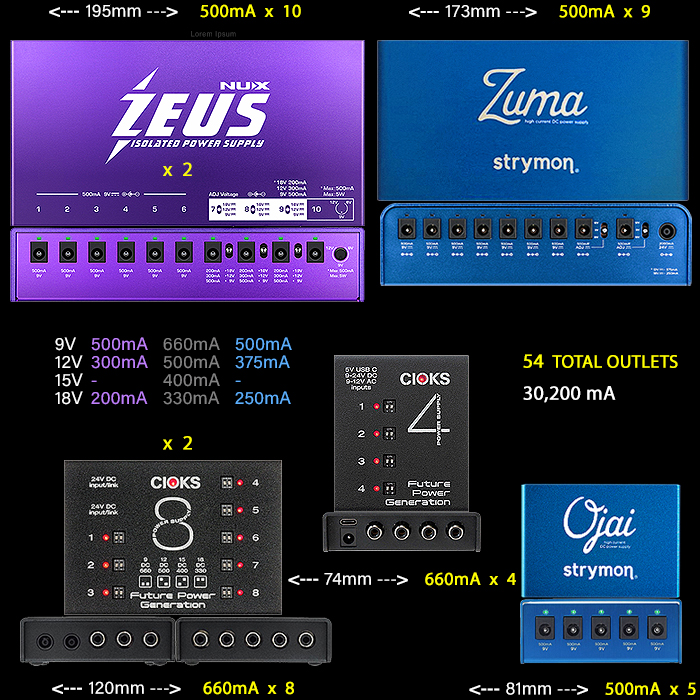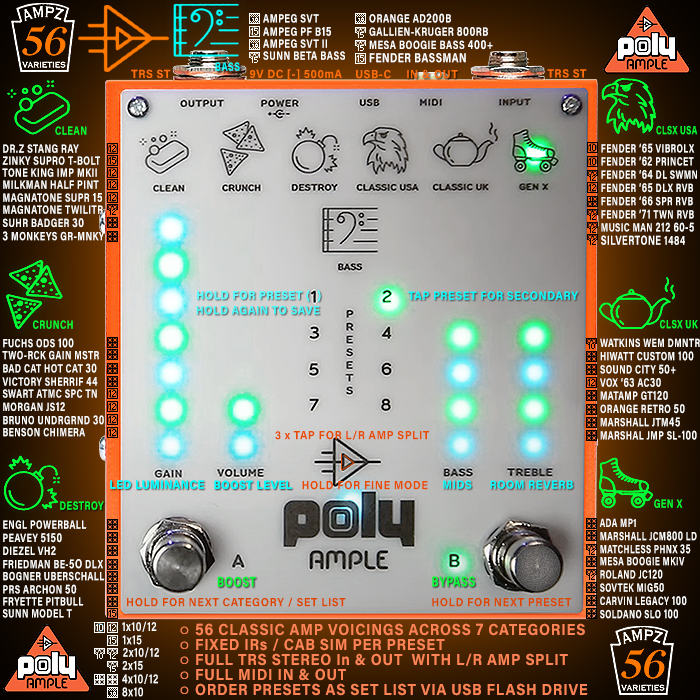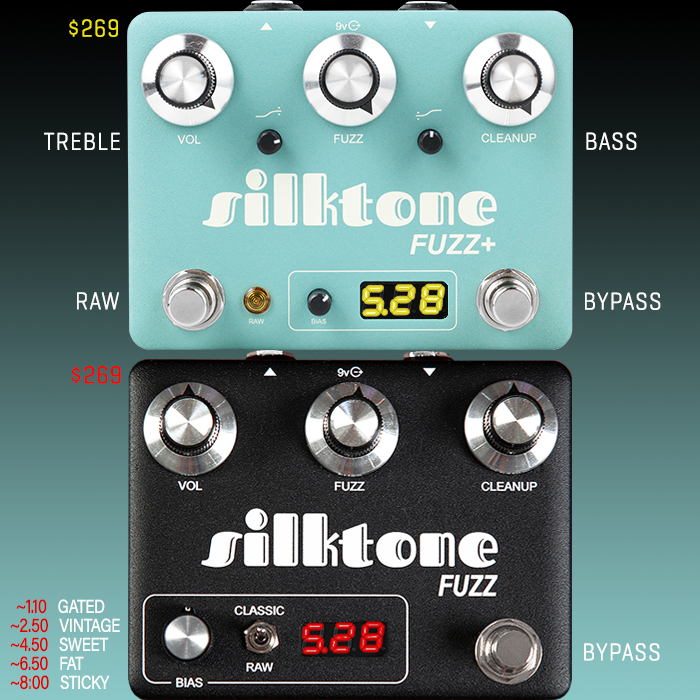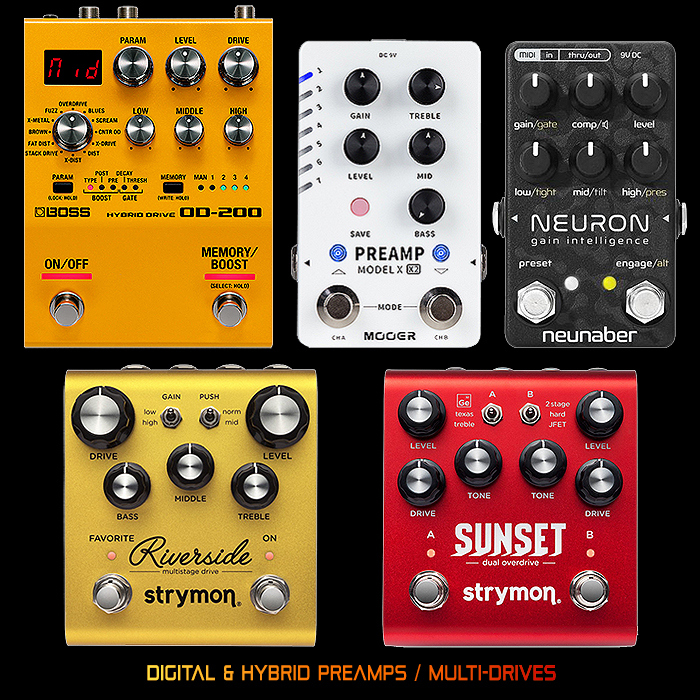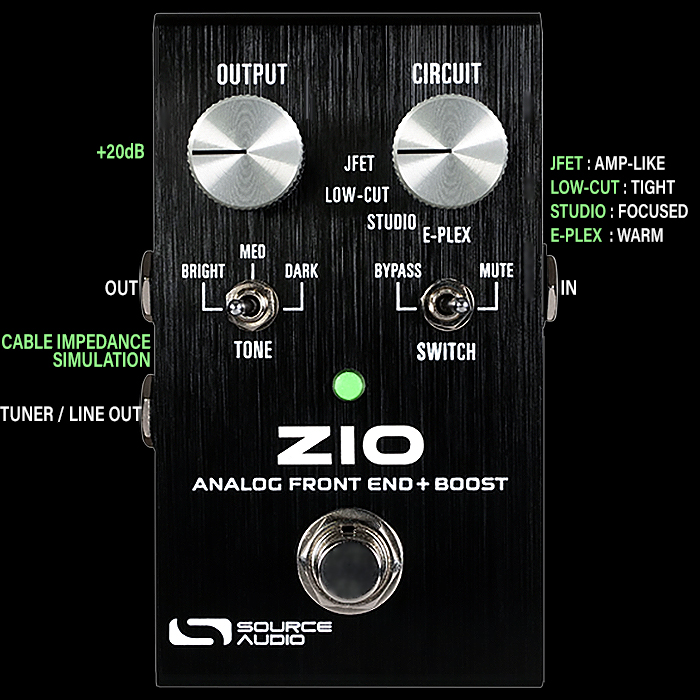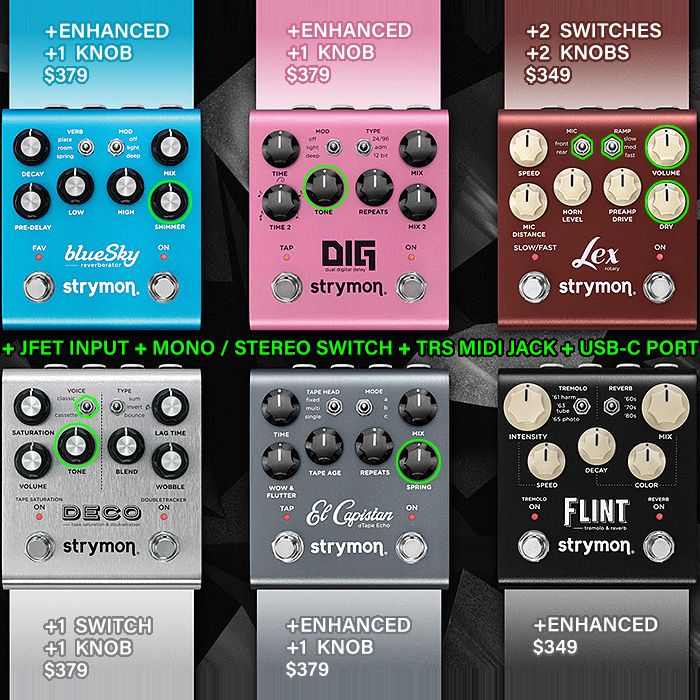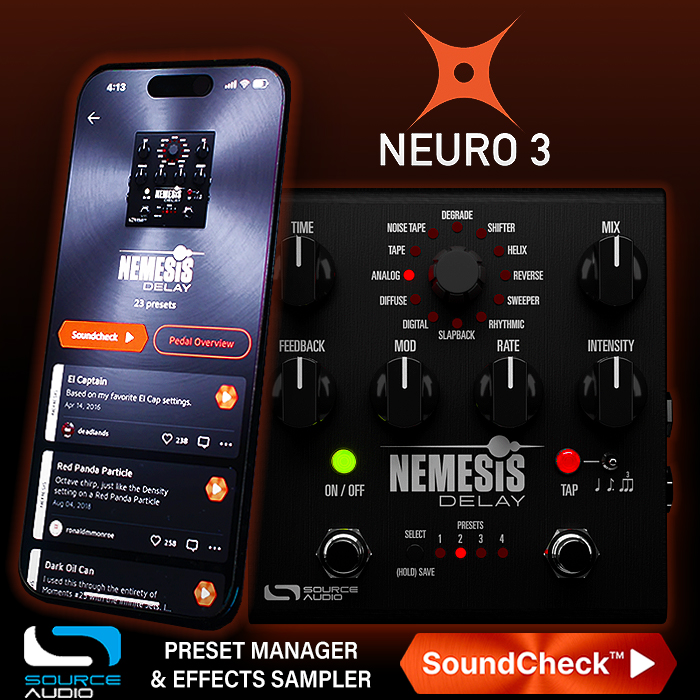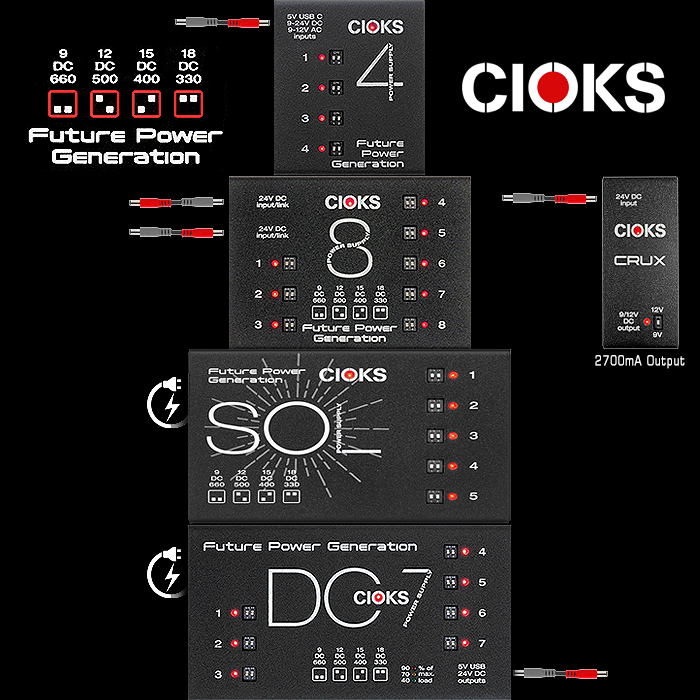GPX Inspired #1 - The Pedalboards of Cyril Demaegd
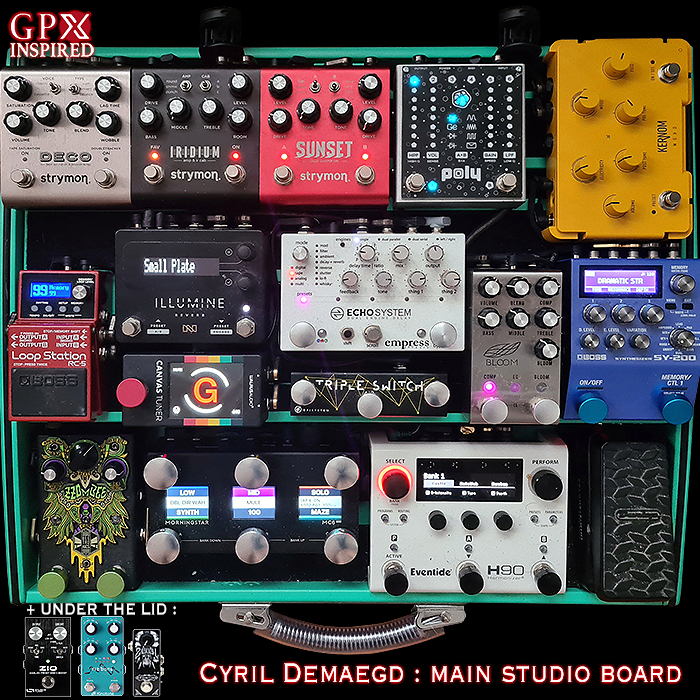
So this has been on the cards for a while, in fact I needed to get an update of both boards featured here, as the first version I had was almost a year ago now. The idea was always to feature reader’s pedalboards - which had been somewhat noticeably / significantly inspired by this very site.
And I’m delighted that Long-term GPX friend and pedal fan Cyril Demaegd, board game designer / developer (founder of Ystari Games) and touring musician, has been somewhat ’Inspired by GPX’ since December of 2019.
Cyril has a very exotic day job where he’s a leading Board Game Designer - first for his own Ystari Games company, but since being acquired by Asmodee - he’s now part of the ’Space Cowboy’ team - responsible for the 5-million best-seller Unlock! Mixed Media Escape Room style Game!
I’m not taking any credit for Cyril’s genius assembly skills, and how smartly he’s chosen and arranged his pedals - I’ve just helped him a little in the discovery and rationalisation process. Cyril has taken onboard several of my core ideas / methodologies - and applied his own spin to them to great effect - exactly as should happen.
Most readers will notice how many of those pedals are regularly featured on GPX - so we obviously have overlapping tastes - which isn’t necessarily always the case!
Much like I pair and stack certain pedals, Cyril has his own unique combinations which form his core sound - including a combination of the Source Audio Zio (Studio Mode), into the JFET Channel of the Strymon Sunset, and into the Strymon Iridium Punch Amp - that Trio combined produces an amazing richly textured and dynamic core sound.
Cyril also uses the Poly Flat V somewhat uniquely - deploying solely the Left / A Clipping Channel - to add texture and accents to his core sound.The Schottky option is his favourite on that!
The one pedal featured here that I’ve still to get properly into is the Kinotone Ribbons - where Cyril loves the Touch Modes - Broken Machine and Magnetic Dance in particular - which he uses mostly as punch-in momentary effects. I’m well aware of that pedal - and do want one for the collection, but have not hit the trigger for it yet (I will!), in fact I ordered in the new Kinotone Sparks as a preference - as I know exactly where that one slots in for me, I’ve yet to fully figure out how I would best make use of the Kinotone Ribbons - and where!
Were I to get a proper ’to-go’ Studio Board - I would undoubtedly similarly select one of those larger Schmidt Array Boards like Cyril has done - I would have to make some very serious decisions as to how to streamline my studio pedal chain - and which ones of those I would finally select. Cyril infinitely prefers to take his Fly Rig on the road - as the Studio Board is over 20 kilos!
While I really like the idea of combining the Eventide H90 and Line 6 HX Stomp on the Fly Rig - those two are incredibly potent each on their own - and together deliver exponentially more. The Source Audio Zio is Cyril’s main tone sweetener - which he deploys near the start of his chain to make everything sound better - much like Strymon and Boss pedals combine analog JFET preamps with the DSP in most of their key DSP type pedals - and of course the Katana Amps too.
So it’s really cool to see Cyril taking on some of my principles - but then applying them entirely uniquely to match his own preferences and sensibilities. That is essentially the meaning of ’Guitar Pedal X’ - finding the most appropriate pedals and combinations that best serve your own musicality.
I often get asked to make recommendations on possible improvements - where there might be a more suitable / practical / usable / versatile pedal for the task - but it is all about getting to those sounds you carry in your heart and head. So many of us love EVH - but we will all tune our rig into those Brown Sounds slightly differently - and with our own signature touches and interpretations to the sound. Most will find their own way!
Cyril is in another league of player compared to my own ’bedroom noise-maker antics’ I may have a decent ear for tone, while Cyril has to apply that skill much more surgically within a live gig scenario.
Note that there aren’t duplicates for every pedal used on both boards featured in this article - and a few of those are currently shared / transplanted - while the intention is to have two wholly separate stand-alone boards where for instance you don’t need to switch the Eventide H90 between boards!
Studio Board Summary


Lid Decal consisting of complementary Ghost in the Shell Concept Artwork to match the colour accent of the Schmidt Array board!
Main Studio Board : Schmidt Array SA550XDM
Dunlop DV4P Volume (X) Mini | Eventide H90 Multi-FX | Morningstar MC6 Pro | Beetronics FX Zzombee Filtremulator | Boss SY-200 Synthesizer | Jackson Audio Bloom Compressor + EQ + Blooming Boost | Empress Effects EchoSystem | GFI System Triple Switch | Neunaber Illumine Reverberator | Walrus Audio Canvas Tuner | Boss RC-5 Loop Station | Kernom Moho Magmatic Multi-Fuzz | Poly Flat V Dual Channel Modulated Overdrive | Strymon Sunset Dual Overdrive | Strymon Iridium Amp & IR Cab | Strymon Deco V2 Tape Saturation & Doubletracker.
Also under the Lid : Source Audio Zio Analog Front End + Boost | Kinotone Ribbons Magnetic Tape Multi-FX | Fortin Zuul Mini Noise Gate.
Power and Key Utilities / Accessories : Cioks DC7 + 2 x Strymon Ojai Power Supplies | Walrus Audio Canvas Stereo XLR DI Out | Cables mostly EWS Gold Flats.
Studio Board Order
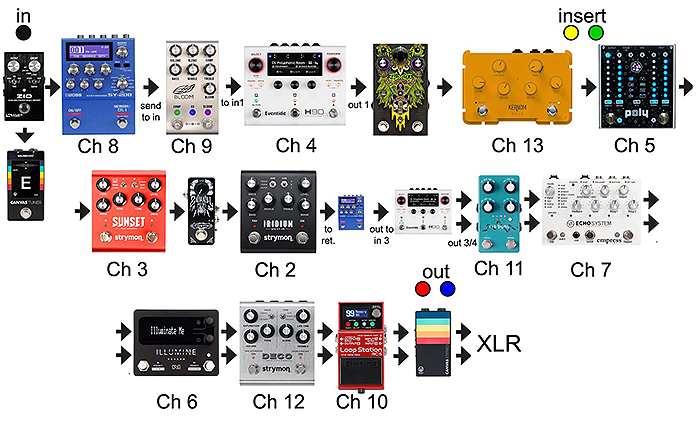
"For the big one [Studio], the SY-200 is pre/post in order to be able to use the synth with or without the Iridium / Dirt. And the H90 is wired in order to place the Modulations before or after Dirt. I also have a patch bay insert in order to test new pedals."
Fly Rig Summary
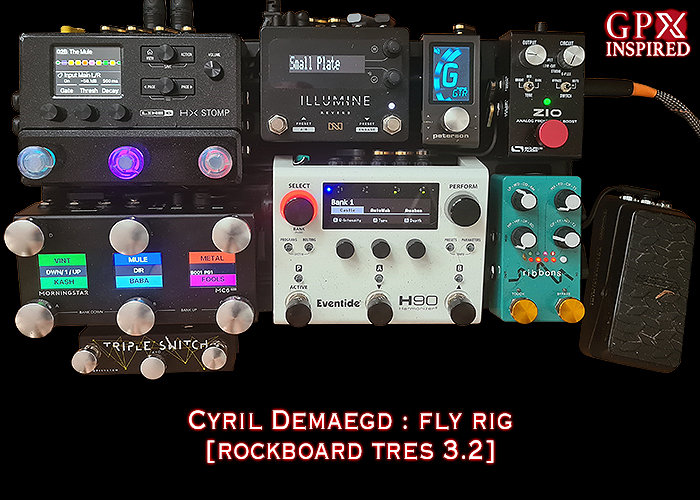
Fly Rig Board : Rockboard Tres 3.2
Dunlop DV4P Volume (X) Mini | Kinotone Ribbons Magnetic Tape Multi-FX | Eventide H90 Multi-FX | Morningstar MC6 Pro | GFI System Triple Switch | Source Audio Zio Analog Front End + Boost | Peterson StroboStomp Mini Tuner | Neunaber Illumine Reverberator | Line 6 HX Stomp Multi-FX.
Power + Key Utilities / Accessories - Cioks DC7 Power Supply | Walrus Audio Canvas Stereo XLR DI Out | Cables mostly EWS Gold Flats.
Fly Rig Order

Note the 4-cable-method Pre/Post positioning of the H90 - which allows Cyril to run certain modulations Pre, and others Post Gain!
And to follow we have individual details for each of the key pedals deployed across both boards - since we have 2 boards, I feel it's most logical to just list those pedals out alphabetically by brand - and then indicate via parenthesis as to whether said pedal is [Studio] or [FlyRig] or [Both].
Beetronics FX Zzombee Filtremulator [Studio] - $349
Controls - Filter Type : Ramp / LFO / Mad [PAR - X - BEE], Buzz : Dry / BZ (Overdrive) / BZZ (Fuzz), Parasite (Wet Signal) : Level / Mix / Tap Division / Ramp Up Speed, Wingspan : Depth, Bee (Dry Signal) : Level / Mix / Rate / Ramp Down Speed, Filter Mode : Octave / Off (Amplitude) / Honey, Presets : 1-5 + Live, Tap Tempo / Ramp / Momentary Expression Footswitch, Engage / Alt / Invert / Stop Modulation Footswitch.
Amazing pedal - which delivers - Filter, Wah, LFO, Randomized Filter, Tremolo, Swells, Overdrive, Fuzz, Low-Octave, Honey Cross Tremolo (Pulses between the fundamental instrument signal and a low-octave).
The only downside with this really is that you need to keep the manual handy as there is so much in that pedal - secondary settings etc. you need to be somewhat Black Belt Pedalboard Level to master this one - but when you do - boy does it deliver. Probably may favourite Beetronics FX pedal to date - along with my original custom shop Octahive!
Boss RC-5 Loop Station [Studio] - $199
Controls - Memory / Loop Level, Rhythm } Tempo, On/Off, Setup, Memory, Setup + Memory = Write.
Industry standard compact looper - with Beats! Boss's flagship compact is a great looper to have on the board - really smart feature set too. I obviously use the larger RC-10R, and RC-600 - I may though return back to the RC-5 at some stage - Boss is the master of those kinds of pedals. Oh - and I use the TCE Ditto+ quite a lot at the front of the chain!
Boss SY-200 Synthesizer [Studio] - $299
Controls - Memory (Enter-Push), Menu, Exit, Menu + Exit = Write (Hold : Lock), Parameters 1 | 2 | 3, Dry Level, Effect Level, Variation, Type : Lead / Pad / String / Bell / Organ / Bass / Dual / Sweep / Noise / SFX / SEQ / Arpeggio.
This one is also permanently in my own pedal-chain - for me the most expansive and capable compact-ish Synth Pedal - with huge extended range - but with a really smart interface to make it easy to handle all that somewhat inherent complexity - actually a breeze to deploy - while you will need to fine-tune every single one of those presets near enough!
Dunlop DV4P Volume (X) Mini [Both] - $139
Ports : Input / Aux / Output.
I use this one too on occasion - I love the Dunlop Mini Volume + Expression and Wah Pedals - and have some of each! Really handy - and so practical. All those enormous paddle types really look like clunkers in comparison. Does exactly what ti needs to, and does it well!
Empress Effects EchoSystem [Studio] - $494
Controls - mode : digital / tape / analog / multi / mod / filter / ambient / delay + reverb / reverse / stutter / lo-fi / whisky, engines : single / dual parallel / dual serial / left | right, delay time / ratio mix (wet/dry), output (level), feedback (decay), tone, thing 1 (parameter variable 1), thing 2 (parameter variable 2, tap footswitch, shift button (+engines = order | +mode = solo active engine | +knob/s = assign to expression pedal | +tap = global/delay time source | +scroll = save preset), scroll footswitch, Bypass Footswitch.
Undoubtedly still my favourite all-rounder Delay Workstation, I'm currently still somewhat fixated with the analog Boss DM-101 - but no doubt I will be back to the EchoSystem in due time!
Eventide H90 Multi-FX [Both] - $899
Controls - Select Program / Playlist / Bank [hold], Perform / HotKnob, Programs + Routing (System when pressed together), Quick Parameter Knobs 1-3, Presets + Parameters (Tempo when pressed together), [P] Active / On Footswitch, [A] Bank Down Footswitch, [B] Bank Up Footswitch.
Another supremely powerful workhorse - I have this in my chain too, and I most definitely underuse it - mostly preferring to deploy more analog effects. While the quality of some of those algorithms on the H90 are really superb. In fact I bought its H9 predecessor almost solely for its Reverbs, and Rotary Speaker Algorithm!
Fortin Zuul Mini Noise Gate [Studio] - $199
Controls - Master Out, extra Key input port
Cyril swears by the Mini Zuul - while I still swear by my Alchemy Audio modded Boss NS-2 - that has never let me down - and I can do the insert loop thing that is kind of essential for me! The Zuul is no doubt very neat - while it doesn't have quite the featured set that I prefer for my rig. Probably the best of the mini ones though!
GFI System Triple Switch [Both] - $59
Switches : A, A+O, O.
A neatly formatted Tripe Footswitch Pedal - to give you extended control of various pedals. I have this too - while I mostly used mine with my GFI System Synesthesia!
Jackson Audio Bloom Compressor + EQ + Blooming Boost [Studio] - $329
Controls - Volume, Blend, Comp, Bass, Middle, Treble, Bloom, Comp Footswitch, Bloom Footswitch, Comp + Boom = EQ.
Another overlap for Cyril and myself! Cyril uses it to switch between Studio / Home and Live playback modes - where the Home version tends to have more low-end content, while for live Cyril must back the Bass, and adds more Mids and Treble! I mostly just use this on mine for a low-end cut - to correct certain slightly bassy / boomy pedals!
Kernom Moho Magmatic Multi-Fuzz [Studio] - $389
Controls - Electricity (±Octave / Harmonics / Ring Mod Adjust), Mood (Character/Nature/Flavour/Texture), Volume, Post Tone, Pre Tone, Fuzz (Gain / Saturation), Preset Footswitch (Hold for 2 seconds to save favourite), On / Off Footswitch, Midi In / Out, and Expression ports on rear.
I don't really need to say anything more here - that I've already said many times over - the greatest Multi-Fuzz ever created - and yes you need MIDI to get the most out of this. With due diligence and perseverance you can really get some super vibrant sounds out of the Moho!
Line 6 HX Stomp Multi-FX [FlyRig] - $649
Controls - View / Action / Save, Volume, Page Down / Page Up / Options, Parameter 1, Parameter 2, Parameter 2, Footswitches 1-3.
Because of my connection with Boss - I wend for the GT-1000 Core, which has more 'Boss' sounds onboard and a higher resolution and more extensive chain building blocks. While I fully concede that the HX Stomp has overall the superior library of effects, and is much more regularly updated than the Boss equivalent. I had several niggles with the GT-1000 Core which remain to this date. For that particularly application - the HX Stomp is definitely still king!
Kinotone Ribbons Magnetic Tape Multi-FX [Both] - $399
Controls - CTRL1 (LP•WD•DD•RM), CTRL 2 (HP•WF•DF•RD), CTRL 3 (MX•FD•CR•T1), CTRL 4 (CP•FF•NO•T2), Modes / Page : 1 Mix / Utility, 2 Wow and Flutter, 3 Degradation, 4 Reverb & Touch, Touch Footswitch (Magnetic Dance / Tape Stop / Broken Machine / Repeater), Bypass / Engage, Press Both Footswitches to scroll through 8 presets - refer to above visual for context!
A pedal that I've yet to fully get to grips with - I really want one, but cannot decide where I would place it in the chain, or precisely how I would use it, and which other pedal this one would knock out. I found a more immediate case for its brand new Sparks sibling - which I instantly known where to place it, and what Kind of sounds I want out of it. For Cyril it's this pedal's 4 Touch Modes that are genius - in particular the Broken Machine and Magnetic Dance - which give him somewhat Hologram Microcosm types of glitchy sounds!
Morningstar MC6 Pro [Both] - $349
Controls - D, E, F, A, A+B = Bank Down, B, B+C Bank Up, C.
This is one of the most beloved of MIDI Switchers - lots of people really love this! For different applications it's pretty much wholly between Morningstar, TheGigRig, and Boss! I would be in 2 minds as to whether to get this or TheGigRig GS3 ATOM! Fortunately I'm not in a position where I need to decide - just yet!
Neunaber Illumine Reverberator [Both] - $499
Controls - Menu / Sub, Param / Save, Preset Up | A/B Footswitch, Preset Down | Engage Footswitch.
Another overlapping favourite - brilliant form factor of Reverb Workstation - where Cyril particularly loves the much celebrated WET algorithms. A really fantastic Reverb - where I would be somewhere conflicted between this, the Empress Reverb, the Poly Verb, and Strymon's new BigSky MX - also I really love Amplitube's X-Space Reverb, and the Boss RV-200 nd RV-500. We've never had so many superb competing solutions - it's often hard to pick one out!
Peterson StroboStomp Mini Tuner [FlyRig] - $119
Controls - Menu : Up / Down, Parameter : Higher / Lower.
My own favourite mini tuner - super precise and versatile - really does the trick.
Poly Flat V Dual Channel Modulated Overdrive [Studio] - $399
Touch Controls - Presets / Banks [Hold], Signature Ident : Toggle B-Sides / Activate VU Mode / Activate Battery Mode / Save Preset [Hold], HPF / High Q, Volume / Sense. Gain / Speed, LPF / Low Q [Tap header to toggle btw Primary & Secondary Params], Diodes : Schottky / Germanium / Silicon / LED, Waveshape / Blend : Sine, Triangle, Square, Envelope Follower, A > B / B > A Channel Order, Footswitch A / Previous Preset [Hold], Footswitch B / Next Preset [Hold].
A really smart collaboration between Josh Smith, and Poly Effect's Loki. Both Cyril and I have had this one on our boards pretty much since it first came out. Albeit we use it quite differently. Cyril uses just the A / Clipping Channel to add texture and accents to his core sound - while I use the both-sides modulated drive the most!
Cyril's favourite clippings option tends to be the Schottky Mode - which I also like enormously, while I generally mix things up quite a bit more!
Source Audio Zio Analog Front End + Boost [Both] - $199
Controls - Output (+20dB), Circuit : JFET / Low-Cut / Studio / E-Plex, Tone : Bright / Med / Dark, Switch : Bypass / Mute.
There are so many cool tone enhancers out there - but this one is what works perfectly for Cyril. He has it mostly in 'Studio' Mode into the JFET Channel of the Strymon Sunset, and into the Iridium for superior dynamic sounds!
Strymon Deco V2 Tape Saturation & Doubletracker [Studio] - $379
Controls - Saturation, Voice : Classic / Cassette, Type : Sum / Invert / Bounce, Lag Time, Volume, Tone [NEW], Blend, Wobble, Input (on rear) : Mono / Stereo.
A really great sounding Tape Saturator and Double Tracker - this has so many clever tricks up its sleeve - while I could never get rid of my TC Electronic Mimiq - as I've said many times before - it's fairy dust for stereo rigs. Were there no Mimiq, then surely the Deco would be next in line for me - I'm generally a huge fan of the Strymon Roster - those pedals have a certain sheen to them, and you pretty much know exactly what you're getting!
Strymon Iridium Amp & IR Cab [Studio] - $399
Controls - Amp : Round / Chime / Punch, Cab : a / b / c, Level, Bass, Middle, Treble, Room, Favourite Footswitch, On Footswitch.
The options for Cab Sim / IR pedals are ever growing - with stellar editions at all sizes - including the mini AmpliTube Tonex One, and Boss IR-2 & IR-200, and Walrus Audio ACS1, and the new improved version of DSM Humboldt's Simplifier - while in may ways the Strymon Iridium is still the classic format for that discipline!
Cyril uses that mostly on the Punch (Plexi) Amp Mode, with his own custom-loaded IR's as follows :
- 3 Sigma 1960A Checkered (Greenback H30)
- York Audio KW12 M25 (a G25)
- York audio 412 MV30
Each of those are used depending on whatever the song requirement is, while the most played one is the first listed! I would probably go for the Iridium too - as it allows me to run straight out from my rig in full stereo. While for instance with the Boss ones you need to do some re-wiring as the main input is Mono, and the stereo effects go into those pedals' FX Loops.
Strymon Sunset Dual Overdrive [Studio] - $299
Controls - Level, A Channel : Ge / Texas / Treble, B Channel : 2 Stage / Hard / JFET, Level, Drive A, Tone A, Tone B, Drive B, A Channel Footswitch, B Channel Footswitch, (on rear :) Bright - / neutral / +, Routing : B>A, A+B, A>B.
This one has been stuck to my board since it first came out in 2017 - and both Cyril and I use it very similarly - he mostly used the B JFET Boost, while I mostly use the A Treble Boost, occasionally with some action from the JFET in the right circumstance. Those boosts obviously help raise the volume somewhat - but they also add in some textural magic! The Sunset is actually really versatile, while Cyril and I funnily use it mostly as a kind of tone-enhancing untility - rather than the extended range Dual Overdrive that it is!
Walrus Audio Canvas Stereo Dual Line Isolator XLR DI Out [Both] - $249
Controls - DI/Li, Level Trimmer, Pad, Ground Lift.
Ports - L In / R In, L Thru, Right Thru, Sum Button, Left Out XLR, Right Out XLR.
Cyril typically outputs via XLR and straight into a PA or Mixing Desk. The Walrus Stereo Canvas allows him to fully control and optimise that stereo output - where it helps deliver a much more robust and reliable output. It's one utility that is pretty much essential for both the Fly Rig and Studio board!
Walrus Audio Canvas Tuner [Studio] - $149
Controls - Down, Menu, Up, USB-C Port.
So Cyril uses both Peterson StroboStomp Mini, and this similarly mini Walrus Audio Canvas Tuner. The Strobostomp has a very uniquely engineered screen for zero latency - meaning you can't switch the orientation of that one. While the Walrus Audio Canvas Tuner allows you to flip it on its side. That uses an OLED screen which has much greater latency and slower response times than the screen of the Peterson. The secret with tuners really - is that within a band situation everyone should use the same make and model of tuner - to ensure everyone is exactly synced. Different tuners work slightly differently and have differences in tuning accuracy - so if you use a variety of different tuners - you will likely be very slightly out of sync!
Cyril Demaegd - Guitarist
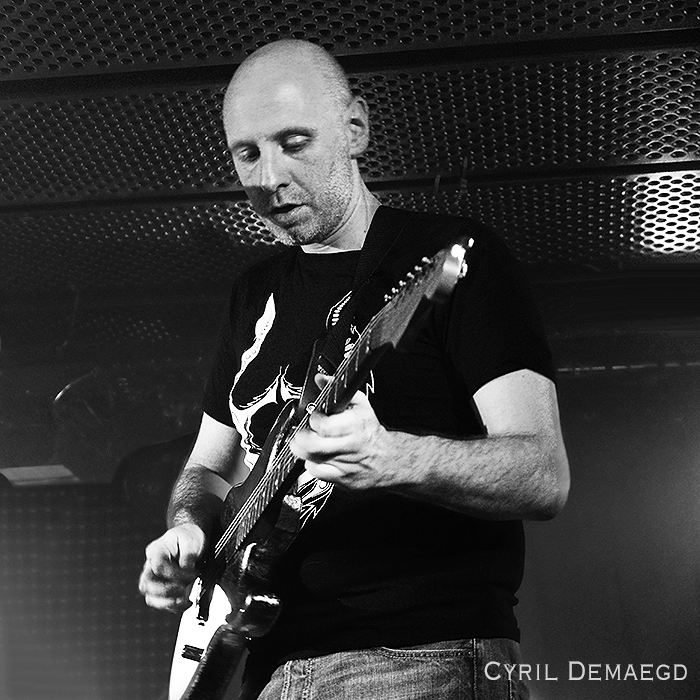
As I mentioned in the intro - Cyril is a very talented guitarist - where he typically loves those heavier textures - Tool in particular, but is also a fan of slightly gentler guitar heroes like Jeff Beck - therefore a large dose of versatility to match his talents!
He also loves making 'PartsCasters' and is surely one of Warmoth's most persistent customers.
Here follow some of my favourite videos of his - starting with a cover of my all-time favourite Toto song, and ending with a Tool cover of course - featuring his brother on bass! :
Telling Lies : a Tribute to David Bowie
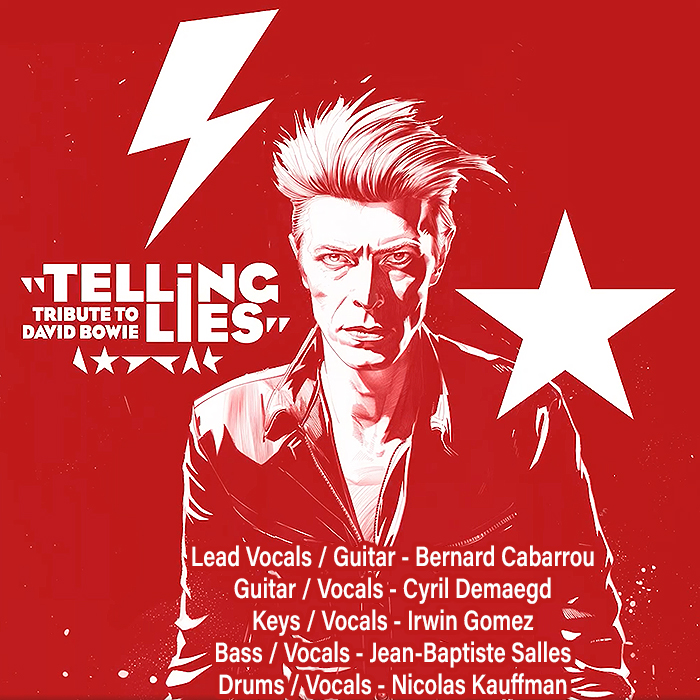
Cyril's latest project is this super-group Bowie Tribute.
Which will be doing an October Showcase Gig presumably somewhere in and around Paris, with a view to then tour the show across Europe in 2025.
Cyril is joined by lead vocalist and fellow guitarist Bernard Cabarrou, with Irwin Gomez on Keys and backing vocals, Jean-Baptiste Salles on Bass and backing vocals, and Nicolas Kauffman on Drums and backing vocals. A really talented quintet of musicians delivering a superbly authentic take, or near as to that legendary artist and performer. Most will know that Bowie is one of my top 3 most favourite musicians of all time!
I would love to catch one of these shows - we'll see what 2025 brings!



















